Jennifer Cecere
B.F.A. '73
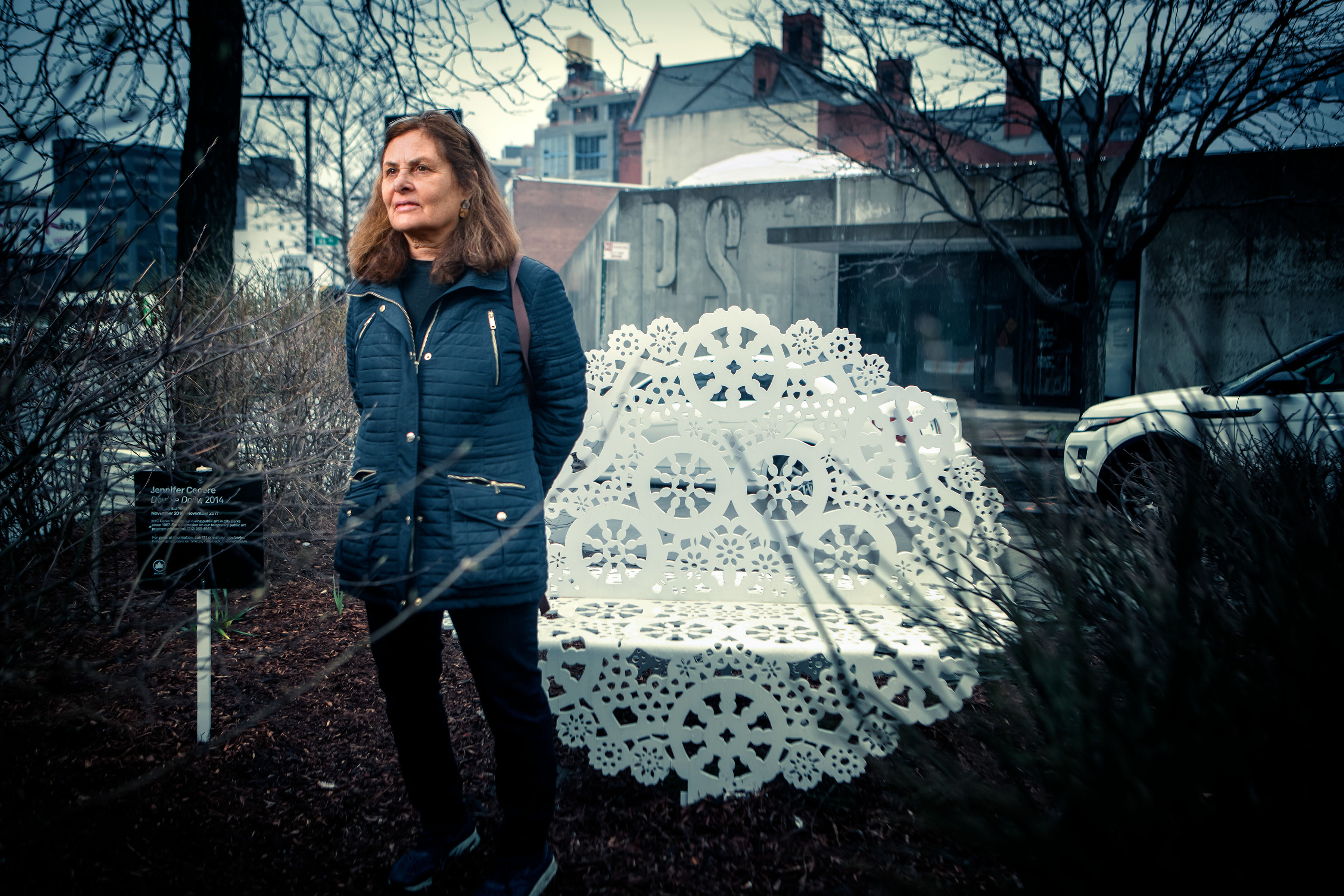
Jennifer Cecere and Double Doily, a white water-jet-cut steel bench, in front of MoMA PS1 in 2017. Robert Barker / University Photography
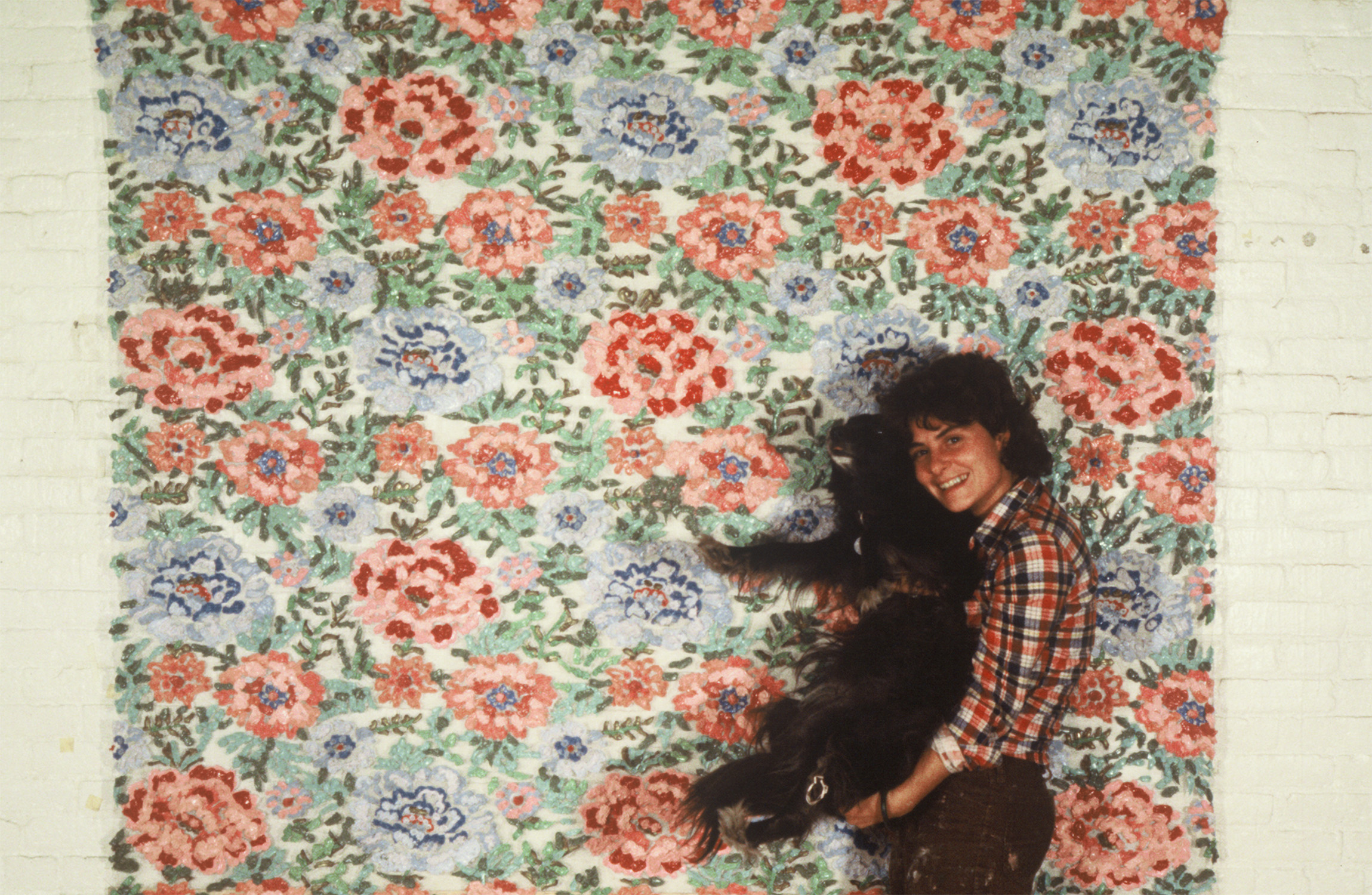
Jennifer Cecere and dog (1979).

Sofa, In My Room exhibition (1979), MoMA PS1, Long Island City, New York.
Projects
In My Room (1979)
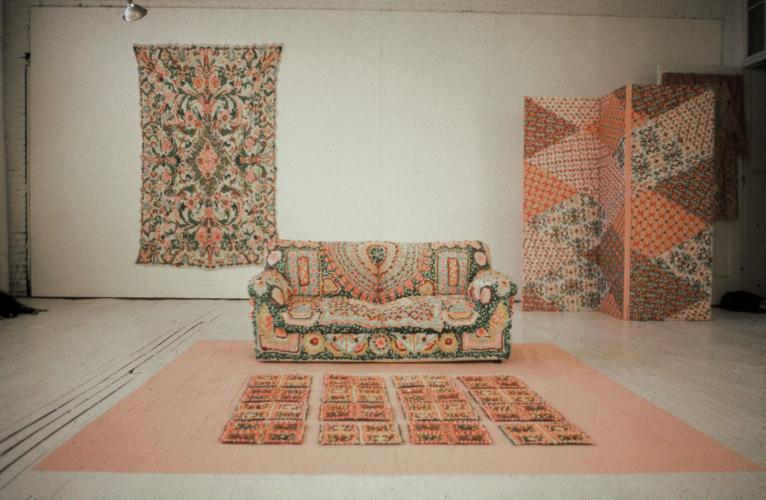
Installation view of the exhibition Special Projects (winter 1979–80), MoMA PS1, Long Island City, New York.
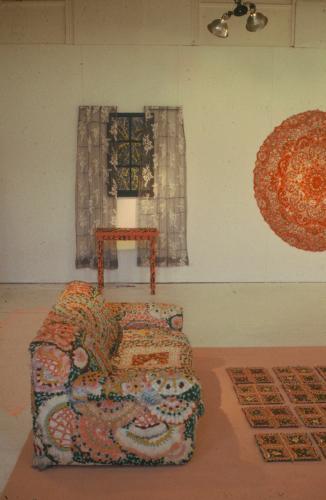
Installation view of the exhibition Special Projects (winter 1979–80), MoMA PS1, Long Island City, New York.

Installation view of the exhibition Special Projects (winter 1979–80), MoMA PS1, Long Island City, New York.
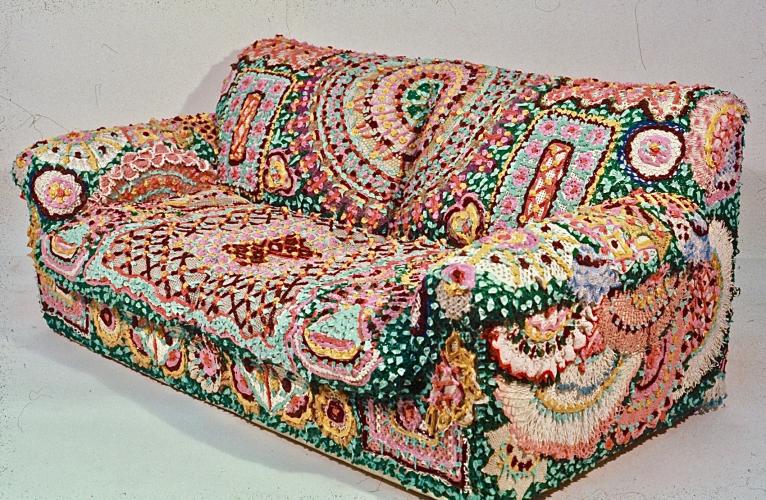
Sofa (1979), canvas, lace, acrylic, collection of Rubell Family Museum, Miami.
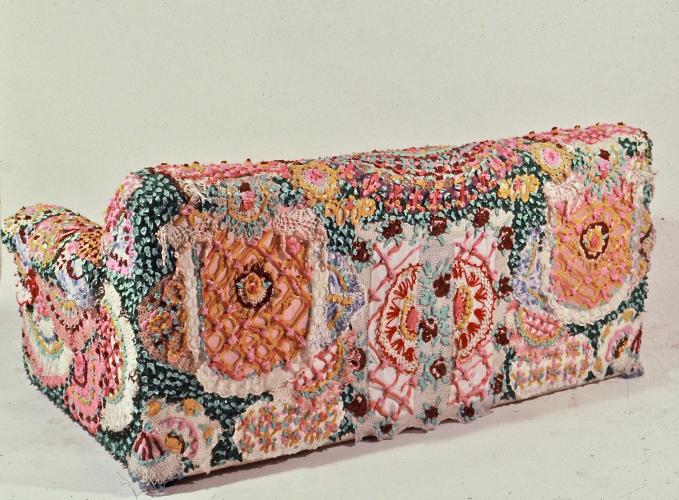
Sofa (1979), canvas, lace, acrylic, collection of Rubell Family Museum, Miami.

For Carl Andre (1979), tiles, MoMA PS1, Long Island City, New York.
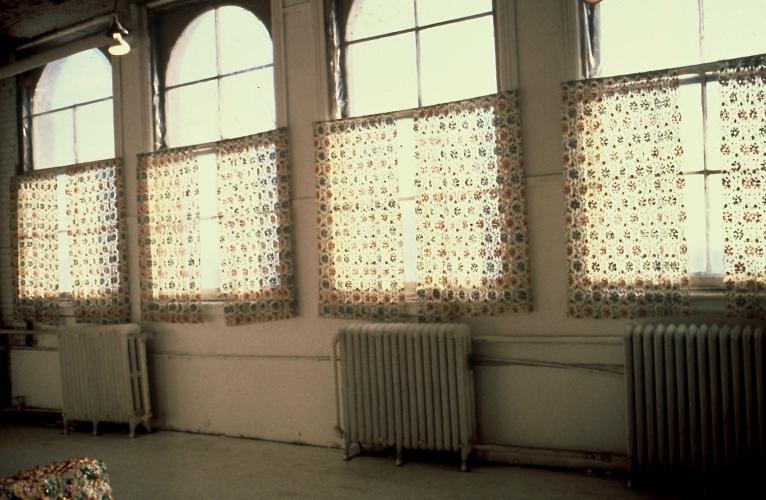
Curtains (1979), lace and acrylic, installation view of the exhibition Special Projects (winter 1979–80), MoMA PS1, Long Island City, New York.
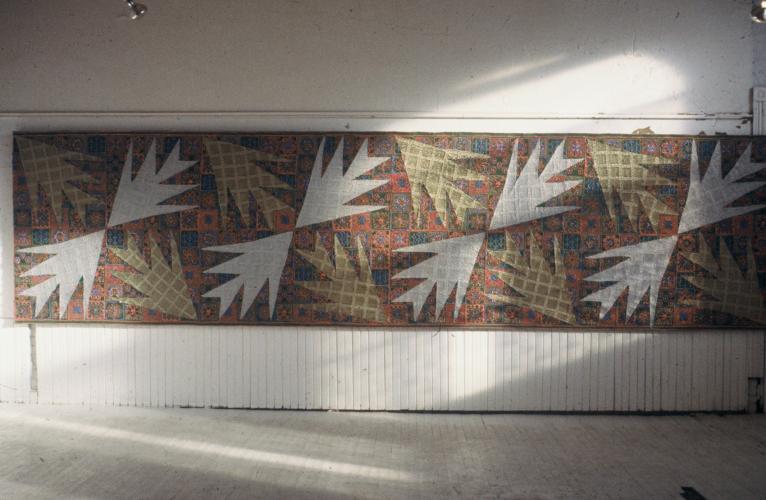
Quilt (1979), fabric and acrylic, installation view of the exhibition Special Projects (winter 1979–80), MoMA PS1, Long Island City, New York.
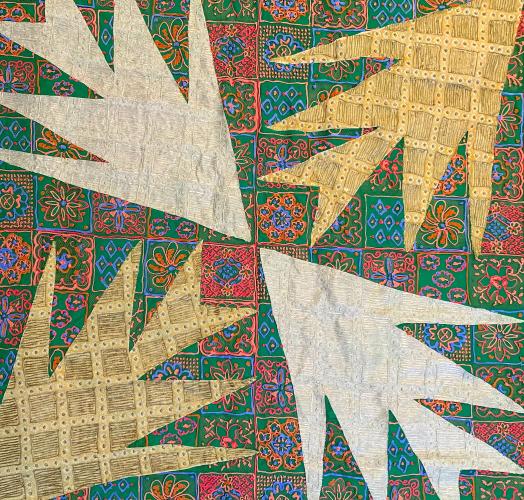
Quilt (1979), detail view, fabric and acrylic, installation view of the exhibition Special Projects (winter 1979–80), MoMA PS1, Long Island City, New York.
Socrates Sculpture Park Exhibition (2009)
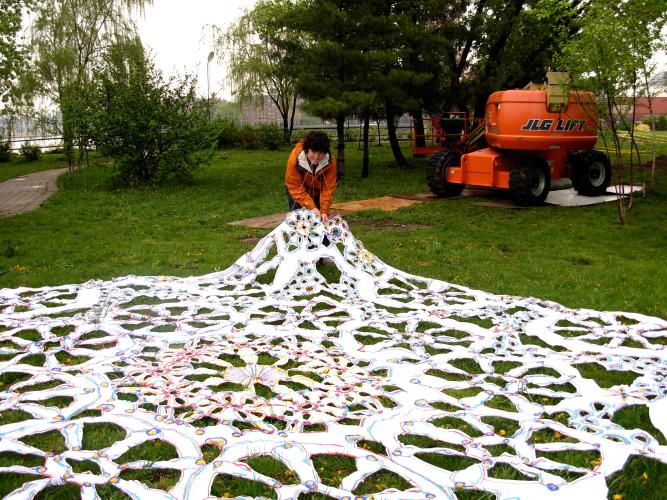
Doily in the Trees before installation, rip stop nylon, 20' diameter, State Fair exhibition (2009), Socrates Sculpture Park, Long Island City, New York.
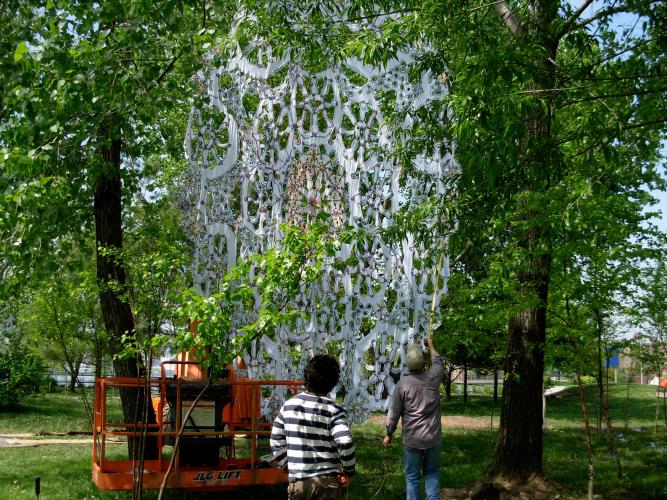
Doily in the Trees during installation, rip stop nylon, 20' diameter, State Fair exhibition (2009), Socrates Sculpture Park, Long Island City, New York.
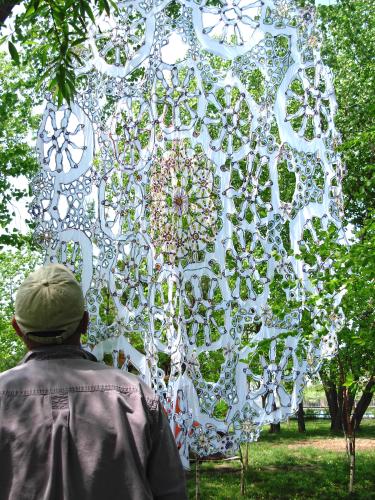
Finished installation of Doily in the Trees, rip stop nylon, 20' diameter, State Fair exhibition (2009), Socrates Sculpture Park, Long Island City, New York.
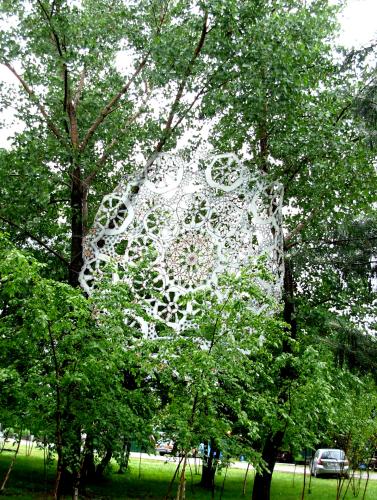
Installation view of Doily in the Trees, rip stop nylon, 20' diameter, State Fair exhibition (2009), Socrates Sculpture Park, Long Island City, New York.
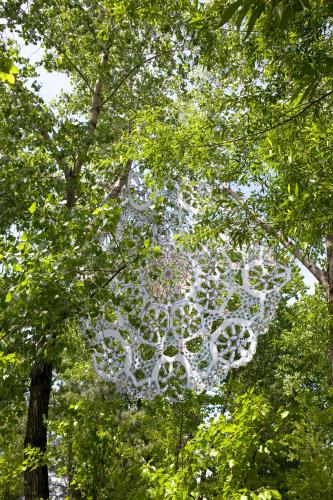
Installation view of Doily in the Trees, rip stop nylon, 20' diameter, State Fair exhibition (2009), Socrates Sculpture Park, Long Island City, New York.

Closeup view of Doily in the Trees, rip stop nylon, 20' diameter, State Fair exhibition (2009), Socrates Sculpture Park, Long Island City, New York.
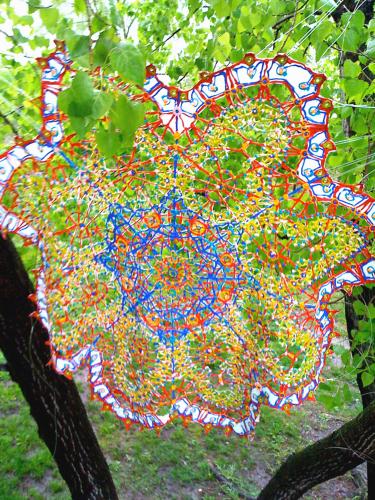
Leaf, rip stop nylon and acrylic, 5' diameter, State Fair exhibition (2009), Socrates Sculpture Park, Long Island City, New York.
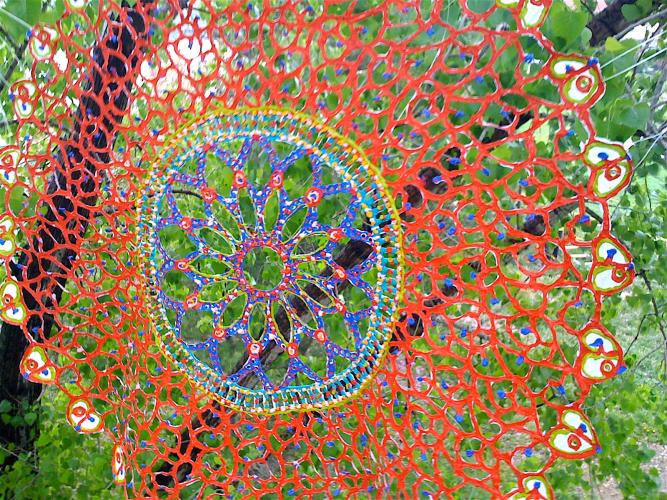
Rose Window, rip stop nylon and acrylic, 5' diameter, State Fair exhibition (2009), Socrates Sculpture Park, Long Island City, New York.
Chandelier (2015)
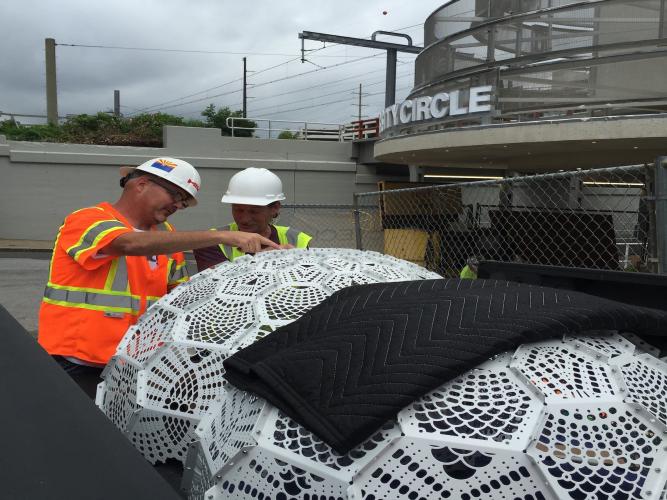
Chandelier installation (2015), white water-jet-cut steel, 7 1/2' x 5' x 15', Little Italy–University Circle, Greater Cleveland Regional Transportation Authority, Cleveland.

Chandelier installation (2015), white water-jet-cut steel, 7 1/2' x 5' x 15', Little Italy–University Circle, Greater Cleveland Regional Transportation Authority, Cleveland.
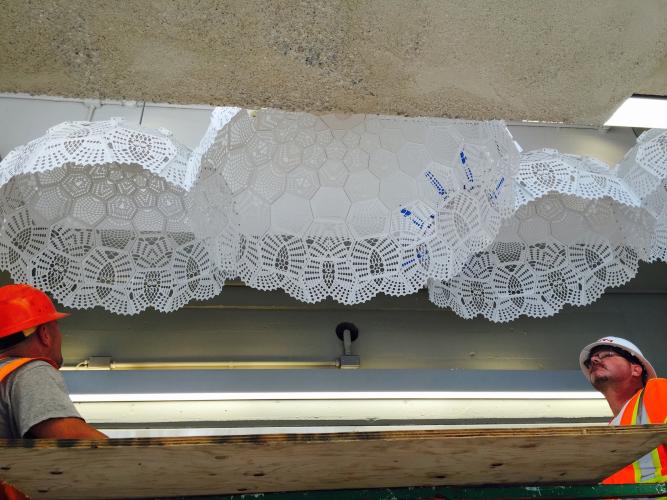
Chandelier installation (2015), white water-jet-cut steel, 7 1/2' x 5' x 15', Little Italy–University Circle, Greater Cleveland Regional Transportation Authority, Cleveland.
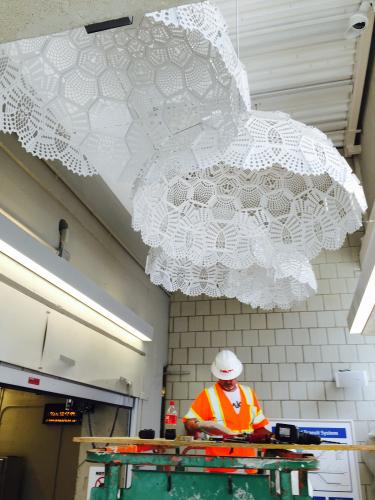
Chandelier installation (2015), white water-jet-cut steel, 7 1/2' x 5' x 15', Little Italy–University Circle, Greater Cleveland Regional Transportation Authority, Cleveland.

Chandelier installation (2015), white water-jet-cut steel, 7 1/2' x 5' x 15', Little Italy–University Circle, Greater Cleveland Regional Transportation Authority, Cleveland. The transit station is surrounded by historic structures, newer buildings, and public spaces.

Chandelier installation (2015), white water-jet-cut steel, 7 1/2' x 5' x 15', Little Italy–University Circle, Greater Cleveland Regional Transportation Authority, Cleveland. Chandelier occupies an atrium entrance to the station.

Chandelier installation (2015), white water-jet-cut steel, 7 1/2' x 5' x 15', Little Italy–University Circle, Greater Cleveland Regional Transportation Authority, Cleveland. The sculpture was inspired by a traditional crochet pattern.
Navigational Chart Series (2019-20)
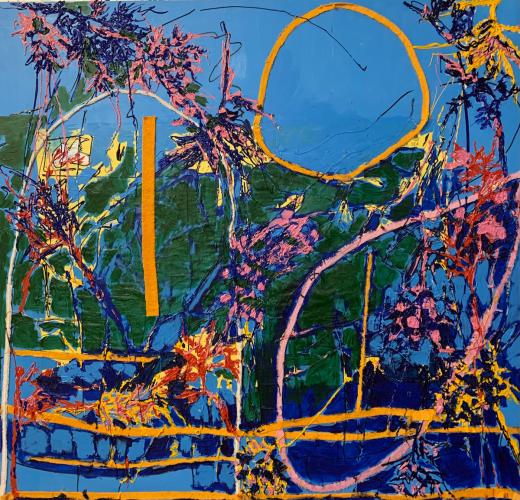
Black Sea (2020), acrylic, fabric, and navigational chart, 52" x 54".
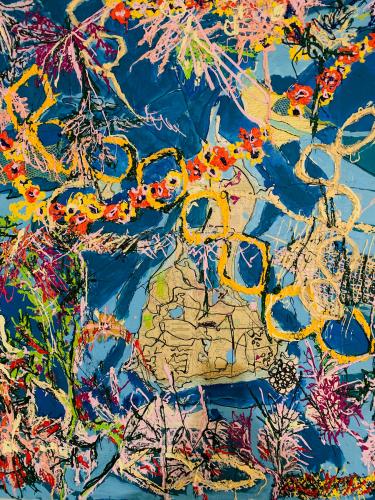
Block Island (2019), acrylic, lace, and navigational chart, 52" x 54".
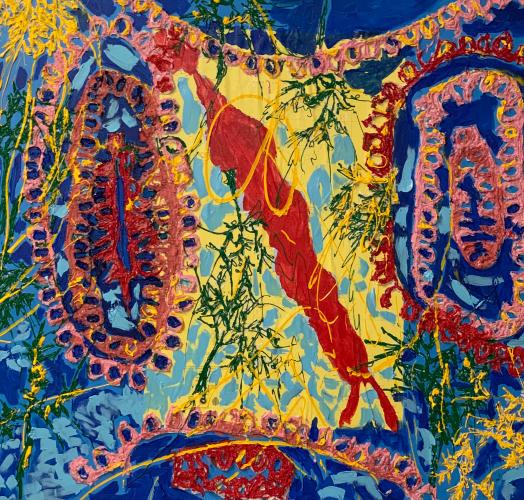
Heat (2020), acrylic, fabric, and navigational chart, 52" x 54".
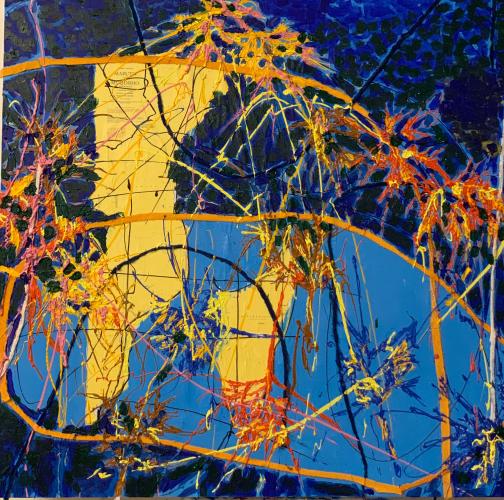
January (2020), acrylic, fabric, and navigational chart, 52" x 54".
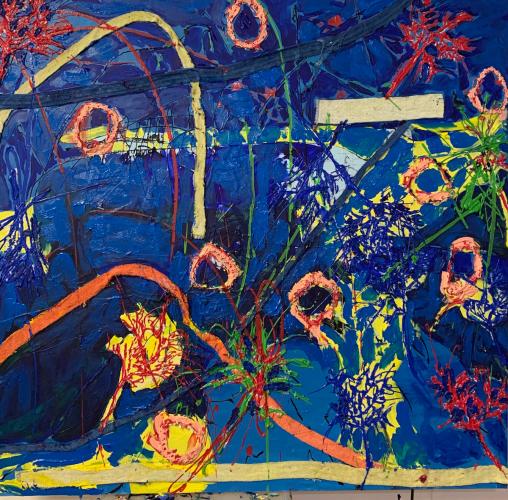
Jellyfish (2019), acrylic, fabric, and navigational chart, 52" x 54".
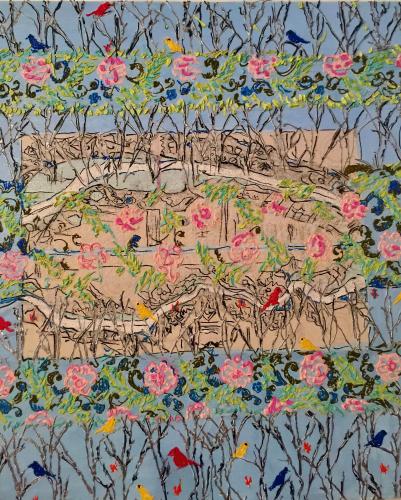
March (2019), acrylic, lace, and navigational chart, 60" x 56".

Martha's Vineyard (2020), acrylic, needlework, and navigational chart, 52" x 54".
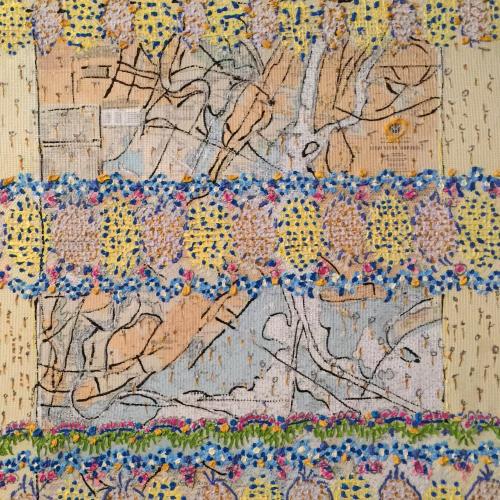
New York Harbor (2019), acrylic, needlework, and navigational chart, 54" x 56".
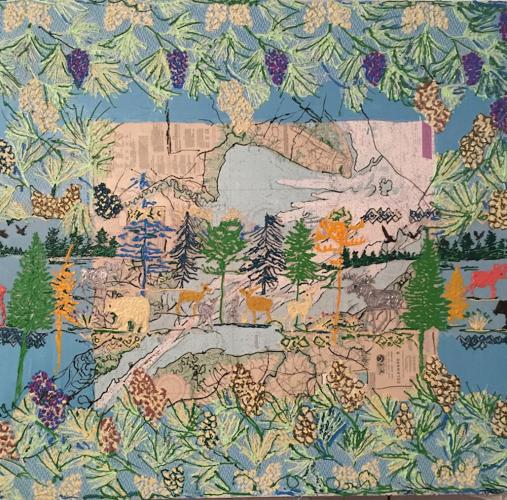
Pine Cones (2019), acrylic lace, and navigational chart, 54" x 56".
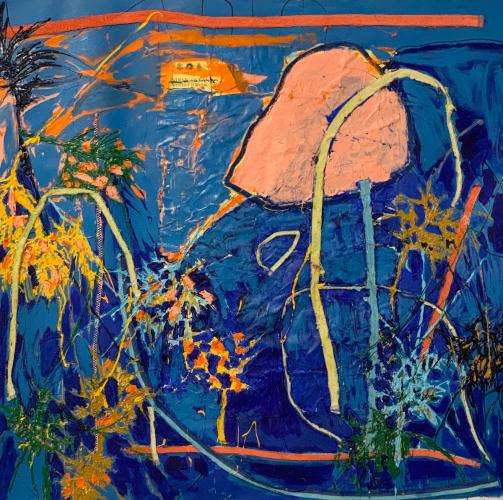
Pond (2019), acrylic, fabric, and navigational chart, 52" x 54".
Color: Lorem ipsum dolor sit amet, consectetur adipisicing elit. Distinctio, eveniet?
